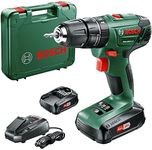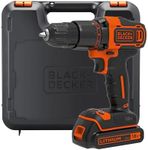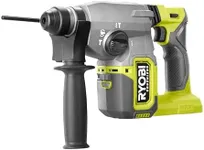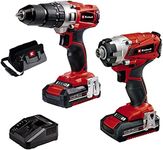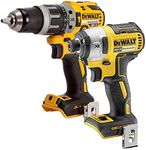Buying Guide for the Best Drills
When it comes to buying a drill, it's important to consider what you'll be using it for. Drills come in various types and with different features, so understanding your needs will help you make the best choice. Whether you're a professional contractor or a DIY enthusiast, the right drill can make your projects easier and more efficient. Here are some key specifications to consider when choosing a drill.Power SourceDrills can be powered by electricity (corded) or batteries (cordless). Corded drills offer consistent power and are ideal for heavy-duty tasks, but they require an outlet and limit mobility. Cordless drills provide greater flexibility and portability, making them suitable for a variety of tasks, but their battery life can be a limiting factor. Consider where and how often you'll be using the drill to determine which power source is best for you.
VoltageVoltage indicates the power of a cordless drill. Higher voltage means more power, which is useful for heavy-duty tasks like drilling into masonry or metal. Common voltages range from 12V to 20V. For light to medium tasks, such as assembling furniture or drilling into wood, a 12V drill is usually sufficient. For more demanding projects, a 18V or 20V drill would be more appropriate.
Chuck SizeThe chuck size determines the maximum diameter of the drill bit that the drill can hold. Common sizes are 3/8 inch and 1/2 inch. A 3/8 inch chuck is suitable for most household tasks and light-duty work, while a 1/2 inch chuck is better for heavy-duty tasks and larger drill bits. Choose a chuck size based on the types of projects you plan to undertake.
Speed and TorqueSpeed is measured in rotations per minute (RPM) and torque is the twisting force the drill produces. Drills with variable speed settings allow you to adjust the speed for different tasks, while higher torque is needed for tougher materials. For general use, a drill with a speed range of 0-1500 RPM and moderate torque is usually sufficient. For more specialized tasks, such as driving screws or drilling into hard materials, look for a drill with higher torque and multiple speed settings.
Battery Life and Charging TimeFor cordless drills, battery life and charging time are crucial factors. Longer battery life means you can work longer without interruptions, while shorter charging times reduce downtime. Lithium-ion batteries are common in modern drills and offer a good balance of performance and longevity. Consider how long your projects typically take and choose a drill with a battery that can keep up with your needs.
Weight and ErgonomicsThe weight and design of the drill affect how comfortable it is to use, especially for extended periods. Lighter drills are easier to handle and reduce fatigue, while ergonomic designs with comfortable grips can make a big difference in usability. If you plan to use the drill frequently or for long durations, prioritize a model that feels comfortable and well-balanced in your hand.
Additional FeaturesSome drills come with extra features like built-in LED lights, which can be helpful in low-light conditions, or hammer functions for drilling into concrete and masonry. While these features can add convenience and versatility, consider whether they are necessary for your specific needs. Focus on the core specifications first, and then look at additional features as a bonus.
